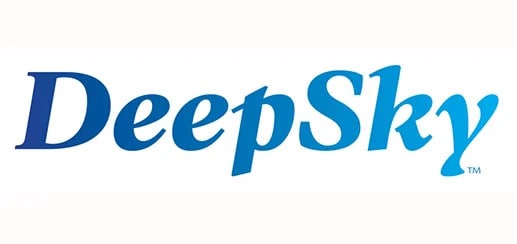Find the best Warehousing & Fulfillment company by filling out the form below, or Click Here to continue reading our page Pallet Storage Pricing And Warehouse Storage Explained
Oftentimes, companies are unfamiliar with how warehousing storage prices work – so one of the most frequent questions we get asked is “how do companies charge for warehousing”? In order to help companies understand the costs associated with storing products or goods in a warehouse we created this article. Our main focus for this article is to explain basic storage fees, including pallet storage pricing, cubic footage pricing, square footage pricing, and any associated in and out fees for basic warehousing services. For more comprehensive scenarios, including full-scale fulfillment services, please reference our in-depth articles on warehousing costs and fulfillment pricing.
Determining the cost of storing products in a warehouse is straightforward once you understand how warehouse storage companies charge. There are a couple of ways different ways that companies charge for storage that you might encounter depending on your unique situation. Most frequently, storage fees will fall under one of these three methods: Pallet storage fees, cubic footage fees, or square foot pricing. In 3PL warehouses, Pallet Storage Pricing is hands down the most common.
3PL warehouses typically charge storage fees once per month, although some companies prefer to bill out bi-monthly, weekly, or even daily. The standard methodology is to take an average count of the warehouse space utilized on the same day each month. However, some companies will calculate daily storage fees to more accurately capture the total storage space utilization throughout the month.
Below is a table that summarizes the most common ways warehousing companies charge for storing products/goods, followed by an explanation of each methodology.
| Storage Method | Average Pricing |
|---|---|
| Pallet Pricing | $18.30 Per Pallet Per Month |
| Cubic Footage Pricing | $.55 Per Cubic Foot Per Month |
| Bin Storage Pricing | $3.20 Per Bin Per Month |
| Square Footage Pricing | $1.15 Per Square Foot Per Month |
One of the most popular ways by far that warehousing companies charge for storage is simply by the pallet. Typical pallet sizes are 48×40 in North America and usually about 4-6 feet high. Europe most commonly uses pallets with dimensions of 1200×1000 mm. As a point of note, an oversized pallet is anything beyond the dimensions of 1 meter x 1.2 meters.
This is how bulk products will be stored. Still, if you have to pick and pack and fulfill, the warehouse might break some of this out to pick orders more efficiently – therefore the overall number of pallets used in the warehouse would increase slightly to accommodate these “pick bins”. Pallets are oftentimes storage in pallet racking using a forklift, and as needed, are pulled from bulk storage bins and delivered to an area of the warehouse that is more accessible to picking individual orders. However, pallets may also be stored on the floor in some cases. When stored on the floor, companies may attempt to stack the pallets 2-3 positions high in order to use the floor space more productively. This can only be done when the pallets are strong enough to sustain multiple levels of stacking.
When billing out using the pallet storage method, warehousing companies will total up the number of pallets at one time during the month – they will most likely literally have a person actually total the number of pallets but could also have it automated to calculate the pallets in the warehouse management system. Usually, warehouse storage companies charge on a monthly basis, rather than charging storage costs per week. Pallet storage fees are great for pallet scenarios but it becomes a little trickier for high-pick scenarios requiring more pick bins. Companies might be charged for more “air” under per pallet methodologies in these cases. Furthermore, pallets aren’t always the most ideal place to pick orders in volume. The national average prices of pallet storage and average sales price of warehouse storage are detailed in this article, but keep in mind that local rates may vary.
Typical pallet storage costs range from $6 per pallet per month to upwards of $15-20 per pallet per month or more.
In cases where companies need sophisticated B2B or B2C shipping, including returns handling and processing, fulfillment pricing can get complicated. However, many businesses simply need pallet storage, with pallets being brought in occasionally and full pallets being shipped out as needed. In the industry, this is commonly referred to as “pallet in/pallet out” warehousing services, which warehouse storage companies provide. In addition to monthly pallet storage fees, you will incur a pallet in and a pallet out fee each time a pallet is brought into or shipped out of the warehouse. These fees are usually the same for both the in and the out.
Typical pallet-in and pallet-out fees range from $4 to $8 per monthly pallet.
When projecting costs, businesses oftentimes don’t know exactly how much pallet space they will need per month. Sometimes, when companies move to another 3PL fulfillment warehouse, they don’t even know how many pallets they currently occupy. An easy way to determine the pallet spaces needed in a warehouse is by estimating the number of cartons that will fit on a standard 40x40x48 inch pallet space. We’ve made the job easy by including the pallet space estimator below:
Now that you know the total number of pallet spaces needed, you can easily determine the total estimated storage fee per month using our pallet storage cost calculator below:
Another way warehouses charge for storage is by cubic footage. When warehouses utilize cubic footage storage pricing methodologies, they will still typically store products in cartons or bins on pallets. One advantage to this method is that it allows for the automation of the calculation of total storage space being used. For example, a company would simply enter in the dimensions of each company’s items in their warehouse management system, and using a simple automated algorithm, the warehouse can calculate the total cubic footage under management by simply multiplying the total units by the unit cubic footage and summing all of the SKUs. Another benefit of this method is that it doesn’t overcharge you for “dead space”, which happens more with pallet storage.
However, this method requires a lot more management to update the correct dimensions of each SKU in the system. It may have higher associated costs for receiving products into inventory since so much more care and information is required. Cubic footage storage fees are more commonly used by fulfillment companies.
Typical cubic footage costs range from about $.45 to $.55 per cubic foot per month.
Another common alternative to pallet storage pricing (often used in conjunction with cubic footage) is pricing per bin. A bin is a small storage space used most commonly for placing “pickable” items so that warehouse workers can easily pick from smaller bins rather than going to multiple pallet positions scattered throughout the warehouse to pick orders.
Typical bin storage pricing ranges from $3 to $6 per bin per month.
A third way that 3PL companies calculate storage fees is by using square footage. This is far less common and is highly contingent upon the going rates in the specific market. This is more common for bulkier and non-standardized products that can’t fit into pallet spaces or racking. In this scenario, warehouses would charge the customer a set price per square foot. The warehouse may, contractually, require the customer to pay for a set amount of square footage, or the warehouse may only charge for the actual space used – depending upon the individual agreement.
Typical square footage storage pricing ranges from $.60 to $1.50 per square foot per month.
Deciding between leasing your own warehouse and using a warehouse storage service is a difficult choice involving more than just comparing costs. Factors such as having control over your warehouse or other specific strategic concerns may make leasing your own space important. However, comparing prices between these two options is thankfully quite easy, and as you will see, using a warehouse storage company is quite compelling from a cost perspective.
To lease your own warehouse, the main challenge is that the cost becomes “fixed” – meaning that you pay a fixed rate each month regardless of the number of pallets you store at the warehouse. According to our last warehousing pricing survey, the cost of leasing a warehouse, on average, is $8.22 per square foot per year. So, for a 5,000 square foot warehouse, the monthly lease cost is roughly $3,425. Furthermore, you will need to sign a lease agreement, where you will be contractually bound to pay that fixed cost for an extended period, whereas 3PL warehousing is more commonly conducted on a monthly basis.
Compare that to using a warehouse storage service, where the monthly pallet fee averages $18.30 per month. For 100 pallets, the pallet storage cost would be $1,830. In fact, you would have to store approximately 200 pallets to equal the cost of leasing the same space. And in cases where pallet counts were lower, you wouldn’t pay $3,425 per month – you would only pay for what you use.
Pricing and options for warehouse storage are significantly impacted by the required terms of the agreement. In other words, the shorter the term for warehousing storage, the higher the rate you’ll pay for warehouse storage services. On the flip side of the coin, if you need warehouse storage for a long period, you can negotiate a much better monthly rate.
The dynamics of the warehousing storage market have changed significantly over the last few years. Because e-commerce selling and online ordering have exploded in popularity, overall available warehouse storage space is lower than ever – and warehousing storage companies are being more particular about the deals they are taking on, often prioritizing fulfillment and shipping scenarios.
Short-term and temporary warehouse storage is defined by an agreement length of less than a year. Anything from a year and beyond will garner more competitive rates. But for short-term and temporary warehousing storage, there is still a spectrum of services with varying interest and price points that will result.
For warehouse storage projects that are extremely quick in term (such as a few days or a few weeks), options will be severely limited, as warehouses just do not have the time, space, or resources to help. Furthermore, they will not make much profit off a very quick project of this nature, so finding a warehouse storage solution for this short of a window will be challenging or impossible.
There will be more options for warehouse storage projects that last from at least a few months to a year. However, in this case, the number of pallets being stored will be extremely important. For projects with less than 30-50 pallets minimum, temporary warehouse storage projects (even for a few months to a year term), will still be challenging to find a solution for. For 50+ pallet deals, warehousing storage options will be better, since the warehouse will have more revenue. In either case, linking up with the right type of company is important. Fulfillment centers will not be interested – you will have to find a proper warehousing storage company focusing on storage and pallet deals.
The prospects of both finding a warehousing storage solution and getting more aggressive rates increase significantly when you need the storage for a period of a year or more AND the pallets being storage are over the minimum threshold of most warehouses. Most warehouses have minimums of at least 30-50 pallets.
Finding options for long-term warehousing storage deals of less than 20 pallets of month will be more difficult. However, your options will be greater if you need other services, such as FBA Prep and labeling services.
It can be challenging to know how much to budget for warehouse storage. As a company, finding the right place to store your stock or products can lead to a search with several different price ranges and offerings. Every warehousing storage service impacts the price somehow, but finding out what is necessary can be confusing.
When choosing where to store your items, you might notice a distinct price difference between storage warehousing companies labeled “storage” and commercial warehouse storage businesses marked “warehouses.” What is the difference between these, and how can you tell which is the best for your business?
There are multiple types of storage, and each type will vary in price and what can be stored. If you have a specific business need for warehouse storage, look through the various types of warehouse storage to see which type works best for you. You can also see whether dry or climate-controlled warehouses work best and what distance will be ideal.
Read on to learn more about the difference in pricing and services for various warehouse services, from product to overflow storage and everything in between. We will also discuss the difference between personal and warehouse storage and why a business should always rent a warehouse.
Companies that offer storage focus mainly on storing personal belongings. Storage facilities are excellent choices for a family moving or without a place to keep their furniture. However, businesses and companies will need an alternative service rather than using storage – that is where professional commercial warehouses come into play. Even the average size of a warehouse differs between personal storage companies and commercial warehousing storage services.
Commercial Warehouses, also called pallet storage warehouses or warehousing storage facilities, are designed to store many products and be easily accessible for business and commercial companies. Instead of small compartments or locked storage units that are intended to store personal effects, warehouse storage companies can easily hold pallets or crates or gaylords of the same product or varying products. These corporate warehouses are catered to companies looking for extra storage, whether for shipping or overflow.
Of course, the most common use for warehousing storage is for product storage. Commercial warehousing storage generally holds products for businesses, whether you ship from the warehouse or use it as a backup of raw materials to be sent back to your manufacturing facility. There are main types of warehousing pricing methodologies, which vary depending upon the way the product is stored:
A pallet is the most extensive and expensive, but companies generally don’t need as many pallets. Typical pallets are about 4-6 feet tall and between 4-5 feet long and wide. These can hold several boxes of products in a very efficient manner.
Customers who rent by cubic foot don’t pay as much per cubic foot but often rent out more of the warehouse. Instead of keeping their items together on a pallet, businesses will stack boxes or packages on shelves in the warehouse. Cubic footage includes the shelves being used if needed.
Square footage is similar to cubic footage, but a business will receive the complete square footage of a warehouse. If they rent half of the warehouse, they will pay by the square foot instead of the cubic foot. Whereas cubic feet can be shared with other businesses, companies that wish to have the whole section will rent by the square foot. This is ideal for larger and bulkier products or equipment that needs to be stacked on the floor rather than in pallet racking.
Most warehouses have bins of varying sizes. These bins can be rented for companies that need to store small loose items or small amounts of items. Bin storage is a smaller version of pallet storage, with the bins set in place and filled with the customer’s items. Products stored in bins are much easier to pick when pulling orders.
Generally, there is no minimum for bin or pallet storage, but renting one or two cubic square feet in nearly impossible. Instead, companies renting in the area will rent larger areas and load and unload the goods themselves. Businesses that don’t have storage containers might use a warehouse’s bins or pallets.
Although many companies have their own warehouses, renting a warehouse may become necessary if too much stock is ordered or the company is resizing or moving. An overflow warehouse allows a company to expand without overcrowding its own space.
Often, the stock that goes to overflow is palletized to make room, which makes it easier to move and store. Some overflow warehousing is shared amongst several companies, cutting the costs for all companies involved and filling the warehouse as completely as possible.
When the company upsizes its own warehouses or has room for the excess material, it can stop renting by pallet and bring its product back to its warehouse. Usually, overflow warehousing is paid for every month. It is often priced by area or by pallet.
Many companies use Amazon to move products more quickly and reach a wider array of customers. However, Fulfilled by Amazon (FBA) comes with certain warehouse restrictions that can stop the income flow and cause your Amazon products to be labeled out of stock.
To get around both the peak time limits and the storage limits, many business owners choose to store extra Amazon stock in a separate warehouse. They can immediately ship it to the Amazon warehouse and keep its storefront running smoothly. Amazon FBA Prep and storage is top-rated for online businesses, as most people purchase through Amazon.
Some companies make much of their money from trade shows. However, the equipment and items they use in the trade shows aren’t sold but instead stored for the next show. This is also true for seasonal companies or specialty pop-up stores.
Trade show warehousing is a popular way to store products and items you’ll only need for specific occasions. You won’t need to worry that they’ll accidentally be sold, and you can choose a warehouse that will ship the trade show items or equipment to wherever the show is being held – and receive the items back into inventory after the trade show has concluded. Your equipment will be in the warehouse when you need it.
Pallet storage is the most common type of warehouse storage, with customers paying for items to be stored in pallets, large containers that hold bulk items for shipping. In many cases, items in pallet storage are only stored until they can be shipped overseas or to another warehouse long-distance.
Sometimes, a warehouse has employees who palletize products and prepare them for long-distance shipping. This service isn’t available in all warehouses but is common near shipping hubs and in most warehouses run by large companies.
Holding goods (usually on pallets) just to ship them out again is called cross-docking and is especially popular for large, international businesses that regularly send products overseas. While most commercial warehouses offer pallet storage, cross-docking is usually found at warehouses near important ports or airports.
If a company deals in international goods, such as alcohol or foodstuffs, it might invest in renting or purchasing a bonded warehouse. Bonded warehouses store goods that will avoid the customs fee usually inferred by bringing them across international borders.
Certain goods must go through specific manufacturing or storage procedures to become duty-free. Private companies or the state can operate bonded warehouses, but they allow them to avoid duty taxes and import goods commercially that would otherwise cost much more.
All of these options, from bonded warehouses to overflow warehouses and standard pallet storage warehouses, can be dry or temperature controlled (including frozen pallet storage). Dry warehouses are simply warehouses that don’t have heating or air conditioning. They are made with insulation and won’t be affected by the weather, but more sensitive items might be harmed by some of the temperature swings in the warehouse.
Temperature-controlled warehouses are excellent for storing musical instruments, perishable goods, antiques, or other temperature-sensitive products. Even with insulation, some products will be affected by the temperature, humidity, and weather and could be damaged. Temperature-controlled and climate-controlled warehouses (also referred to as food or beverage warehouses) will take care of these delicate items.
On the other hand, food must have a specific temperature, or else it will spoil. Food storage involves a different speciality in cold or freezer warehouses. Either way, temperature or climate-controlled warehouses are worth it for more delicate items and perishable goods despite the increased cost versus standard warehousing storage.
Regarding pricing, dry warehouses are much less expensive than temperature-controlled warehouses. This difference is because businesses won’t have to pay for extra electricity, air conditioning, or special conditions for their products. However, many companies with sensitive items choose to pay extra for climate protection because it is an absolute requirement.
There are many other factors that can play a part in the actual storage charge. First, location is important. The storage fees will be considerably higher in areas where real estate costs are higher. Second, costs can vary if the warehouse owns or leases the facility. In cases where a company has been around for quite some time and owns the building outright, more flexibility might be available to provide lower rates. Third, there are a number of special control requirements that can affect overall pricing. Examples of these factors are refrigerated or climate control storage or even special storage conditions, equipment, or licensing that costs the warehouse more to facilitate. More fees will likely be to cover the additional costs in these cases.
Fourth, there may be additional costs to cover bonded warehousing or other insurance requirements. Finally, it’s important to understand that volume may impact overall pricing. Our latest survey found that 38.71% of all warehouses discount storage fees, and the average discount is 2-12% and usually requires in excess of 100 pallets stored per month. When a customer occupies a large volume of space, they may be able to command a lower rate.
But be careful – choosing the cheapest warehouse comes with the risk that the warehouse won’t keep your product in good condition and/or lose some of your product. There is a definite balance between cheap warehouse storage and paying the right amount to ensure you have no issues with your stock and inventory.
There are thousands of warehouse storage companies in the US and Canada, and it can be difficult to find them online. If you search long enough, you might find them, but oftentimes you’ll come across lists of warehouses – most of which will not be the best fit for your company. Furthermore, you may also come across on demand warehousing options, which may have some solutions for your company. However, you will not be paying as low of a rate as if you went direct with the warehouse itself, and these on-demand solutions will oftentimes have high monthly minimum dollar spend or pallet count requirements.
Alternatively, we’re happy to help match you with warehouse storage solutions. You don’t have to search online for “warehouse storage near me.” Instead, fill out our online form or navigate to the appropriate area below and get matched with the best options. We work with companies that offer flexible minimums, and our service doesn’t affect your pricing. We get a small fee of $30 from the warehouses when we match you with them – so you pay nothing, and no fees impact the pricing they give you.
Although all these types of warehouses have different pricing structures, the location you choose can affect them. Renting a warehouse will be more expensive if your company is in a busy part of town, a warehouse section, or the business sector. Looking further into the suburbs for cheaper options for your warehouse location might be helpful. Furthermore, there are certain geographic areas (usually larger cities) where pricing is often higher because of the increased demand versus supply.
However, there is a cost to storing your goods farther away from your primary business, customers, or any shipping ports. The further your warehouses are, the more you will pay for transportation and shipping between locations. Renting in a remote location can take away any money you save.
While there are pros and cons to renting a warehouse near your company, the decision comes down to you. As you decide what type of warehouse storage your company needs, you can decide whether a closer location is better for both convenience and shipping prices.
Typically, public warehousing companies charge around $15-20 per pallet per month, $.55 per cubic foot per month, $3.20 per bin per month, or $1.15 per square foot per month for storage services.
Charges for pallet storage typically occur at regular intervals, with the frequency determined by the warehouse’s billing cycle. Warehouses may invoice monthly or quarterly, depending on their specific billing practices.
The average dimensions of a single pallet in a warehouse are 40×48 inches by 4-6 feet in height.
The items are stored by stacking them on racks or shelves using forklifts for easy accessibility. The stacking method depends on the warehouse layout and the type of products stored. Typically, they are organized systematically to maximize space and facilitate efficient inventory management.
Warehouses typically assess charges ranging from $4 to $8 per pallet for inbound and outbound services, covering tasks such as receiving, pulling, and preparing pallets for shipment. These fees contribute to the total cost of handling and managing goods within the warehouse facility. The specific pricing within this range may vary based on factors like the warehouse’s location, additional services provided, and the nature of the products being stored or shipped.
Warehousing companies provide price breaks and these discounts typically range from 2% to 12% for customers storing more than 100 skids. The exact discount percentage often depends on factors such as the warehouse’s pricing structure, the duration of storage, and the overall volume of pallets being stored. Customers with larger quantities of skid storage can benefit from negotiating these price breaks to optimize their storage costs.
FREE storage is not common in the third-party warehousing industry. However, in some cases where significant volumes of pallets are being moved and/or a significant relationship already exists, 3PLs may offer a few days of free storage.
Your contact information is held in the strictest of confidence. We will contact you before we connect you with vendors so that we can learn about your situation, obtain any of your contact preferences, and answer any of your questions.
YOU have control over your contact details:
We Care About Your Privacy. Your information is shared with only pre-screened providers. You may opt out of communication at any time. View our Privacy Policy.

I want to say thank you for your help in finding a warehouse so quickly. Your service was amazing. I received replies the same day and have selected a company that will work well for us. I definitely recommend your services.

I wanted to express my gratitude for your services and let you know that it was a very enjoyable experience! We have selected one of the companies and they are awesome!

You are doing such a great job and this service that you provide is a life saver for people especially startups like me....We cannot spend budgets on researching as much as the big firms can...and you provide us one stop solution which will answer all our questions.

I just wanted to let you know that I selected one of your vendors as our fulfillment house. They can do what we need and we’re looking forward to working with them. They can handle our “special projects” fulfillment, which was key to our decision in bringing them onboard. I appreciate this service. It was great for our company.

I didn’t know there was so much difference in fulfillment companies — this was my first time in need of this sort of service. After a Google search I luckily stumbled upon WarehousingAndFulfillment.com. They saved me an incredible amount of time and money. Within minutes I had a couple of emails from good companies that fit my situation. I am very appreciative of their help.

Warehousing and Fulfillment was the perfect matchmaker in finding us a fulfillment partner. They provided several great options, all of whom were very responsive and willing to take the time to talk through our needs. We ended up going with W&F’s top match and we couldn’t be happier. I highly recommend W&F, particularly to anyone whose business relies on a strong fulfillment partner.

We were having multiple issues with our 3PL fulfilling warranty replacement parts. Our company needed to make a change and make one fast. I reached out to WarehousingAndFulfillment.com to facilitate my search for a reputable, service oriented 3PL that can handle the demands of a highly seasonal business to pick, pack and ship parts quickly. I received several qualified 3PL leads that matched what we were looking for. After reviewing and speaking with many one stood out from the rest, and we found a great partner. We could not recommend WarehousingAndFulfillment.com enough.

We found the perfect third-party fulfillment vendor through insightQuote. We never would have found them on our own. We can’t thank you enough and our customers thank you too.

Thanks for all of your help. This was a huge undertaking for us and your guidance was extremely helpful!

Thank you so much for your excellent service. We have chosen one to go forward with. This has saved us a great deal of time.

They really listened to our requirements and then matched us with great vendors that could meet our specific challenges.

I just wanted to say thank you so much for setting me up with these vendors. I have found pricing better than I ever expected to find.

Legit, this was such a good experience ... I was shocked how fast the vendors contacted me and got the ball rolling. This was such a pleasant experience

What an awesome service. A problem I fought with daily for over 3 weeks, solved in less than 24 hours.

 View More
View More
Get fulfillment tips delivered to your inbox!